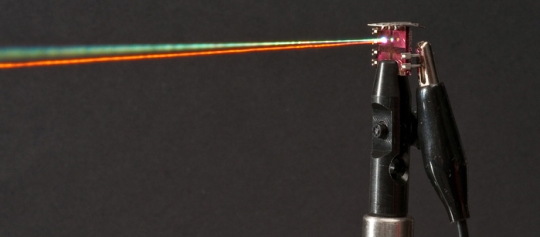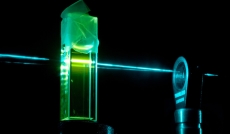Research projects

Photocurrent generation in next generation solar cells
The use of ultrafast laser spectroscopy enables us to directly measure charge separation in next generation solar cells, including organic, nanocrystalline, and organometal halide perovskite solar cells. Our spectroscopic investigations reveal fundamentally different mechanisms of operation for each of these types of solar cell materials.
Our work to better understand charge separation on extremely fast timescales will guide the development of new materials for low-cost solar cells.
We also use a combination of new data acquisition and data analysis procedures to overcome technical challenges and improve the sensitivity and resolution of data outputs.
Exciton transport in organic solar cells

When light is absorbed by organic semiconductors, photoexcited electrons exist as tightly bound charge pairs called excitons. In organic solar cells, excitons must be transported to charge separating interfaces during their sub-nanosecond lifetime to enable the electron to escape and a current to flow.
We use ultrafast PL spectroscopy to investigate novel ways of enhancing exciton transport that are inspired by photosynthetic light harvesting in plants. We also use the same tools to investigate the nature of PL in organometal halide perovskites.
Biofunctionalisation of conjugated oligomers
In this project, we are working to develop self-assembled nanoelectronic devices. These materials are made by ‘hybridising’ molecular semiconductors with short peptides and oligonucleotides to create new materials with wide-ranging properties. We have recently demonstrated electronic field effect transistor devices comprised of organic semiconductors assembled via aggregating peptide sequences isolated from natural proteins.
Research funding
Our research is supported by the Rutherford Discovery Fellowship, the MacDiarmid Institute for Advanced Materials and Nanotechnology and the Dodd-Walls Centre for Photonic and Quantum Technologies.
Available research projects
Research projects for postgraduate students in all of our research areas are now available. Please contact Dr Justin Hodgkiss for more information.
